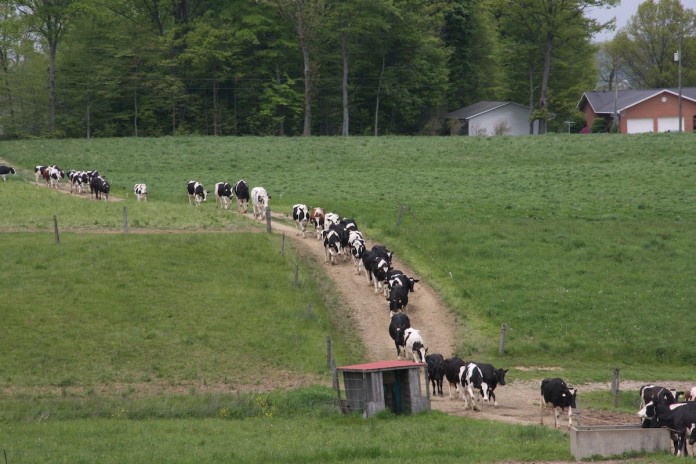Hello, northeast Ohio. We know that each year presents us with new challenge, and one of the challenges faced by agriculture across the state of Ohio during the past two years has been the weather.
As farmers, we cringe at the memory of the delayed and muddy harvest in the fall of 2018. This was followed with excessively wet conditions in 2019. Weather will continue to be an issue as OSU Climatologist Aaron Wilson has shared statistics on how we have lost five days in both the spring and fall to do fieldwork.
Now to 2020
We have heard and probably used the phrase, “It can’t get any worse.”
Well, true to form, 2020 has already surpassed the previous two years in the misery index.
At the beginning of the year, there was a lot of optimism for agriculture in 2020, but then the coronavirus pandemic hit. By mid-April, prices for ag commodities had taken a big tumble.
In the dairy sector, some farms have been asked to dump milk and the Class III & IV futures prices for milk are down more than 33% since coronavirus was first confirmed in the United States. Over the past few weeks, the nearby milk future prices were trading under $11.
It is no doubt that 2020 is going to be a rough year. I know all of us are tired of the typical academic response which tells us to tighten our belts a little more. If you are like me, your midsection is already in pain from all the tightening. Regardless, 2020 is forcing us all to think differently. So what advice can I offer?
Reexamine your budgets
Before you hit the fields, make sure to revisit your budgets as a lot has changed in the past two months. For instance, at the beginning of the year, our OSU Extension budgets had estimated the average prices of $3.70 and $9.10 for corn and soybean per bushel.
A recent report from the Food and Agricultural Policy Research Institute predicts the final marketing year averages to be closer to $3.35 and $8.27 respectively minus basis. On the positive for the budgets, farmers may see some savings on their fuel, fertilizer, and a few other variable costs to offset the drop in commodity prices.
Trim the unproductive
We have all heard the phrase of trimming the fat. In 2020, it will be the year to trim the unproductive animal or piece of ground from your operation. For a dairy farmer, that may mean looking at voluntarily culling the bottom 5-10% of the herd. Given current milk prices, a cow producing only 35 pounds of milk may not be even covering her daily feed costs. Even though the markets are down, there may be a window in the future to strategically market some animals.
Field by field
On the crop side, now is the time to take a critical look at your operation field by field. Have you ranked your fields from top to bottom based on their return per acre? Are there fields that you should not farm? Are there sections of existing fields that don’t yield enough to recapture the cost of planting them? Think of the frequently flooded sections or the areas ravaged by wildlife and the lower-yielding field margins. Should you consider not planting these areas to commodity crops but instead plant cover crops? It might improve water quality and reduce soil erosion without impacting the overall return per acre.
Be a student of the game
Keep searching for little wins that can help your bottom line. Challenge yourself to think outside the box. Should I induce short term reductions in milk yield via diet modifications? Can I save money by cutting back on milk replacer by feeding whole milk? What are some spring forage options? What coronavirus relief programs could my farm participate in? If I am asked to dump milk can I salvage some value by feeding it to cows?
Unconventional times call for unconventional thinking. Check out our Dairy Issue Briefs at dairy.osu.edu/. These briefs can help you answer these questions and many more.
Final thought
The only certainty we have right now is the fact there is no certainty in this pandemic. We truly are in uncharted territory. The past two years have built our resilience. I encourage you to keep your eyes and hearts upward.
In closing, I share the encouragement from the closing stanza of Ulysses by Alfred Lord Tennyson which states, “To strive, to seek, to find, and not to yield.”













